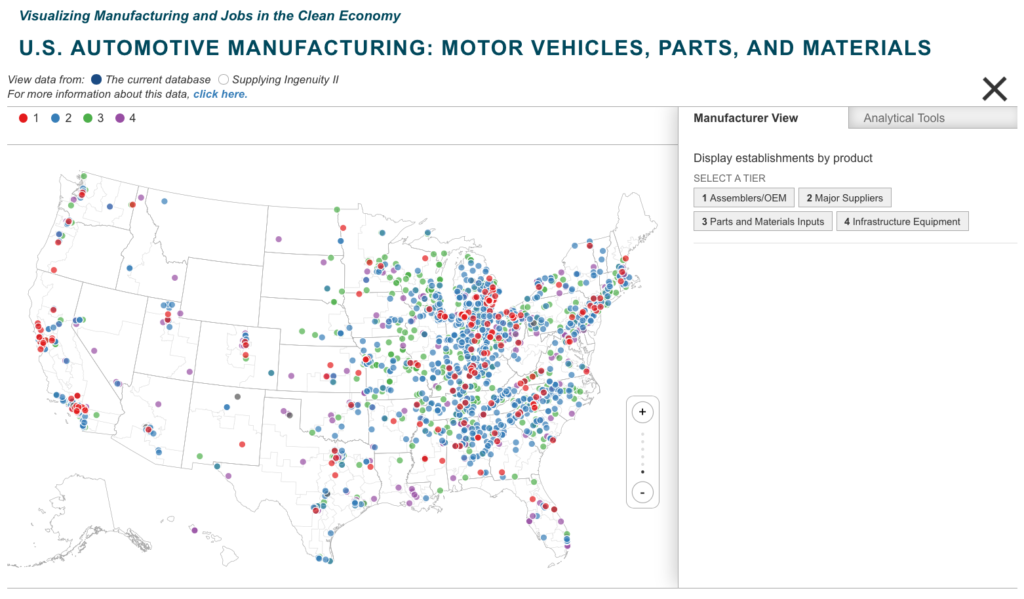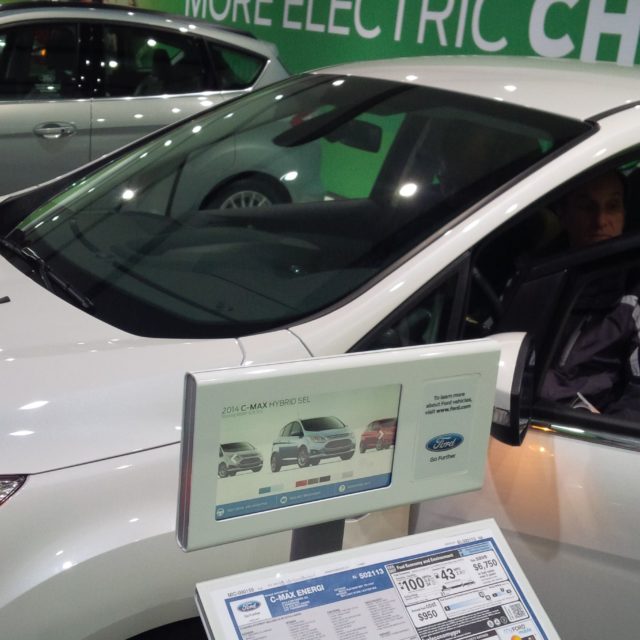Join the BlueGreen Alliance
Help us identify ways to turn today’s environmental challenges into job-creating and economic opportunities!Across the country, workers are building innovative, far more efficient cars, SUVs, and trucks—combating climate change and driving manufacturing growth and job creation.
The Challenge
America’s landmark fuel economy and greenhouse gas standards for cars and trucks are working. Across the country, workers are building innovative, far more efficient cars, SUVs, and trucks of all sizes and types. These vehicles are on track to achieve deep cuts in U.S. carbon pollution—anchoring the nation’s Paris commitments to reduce greenhouse gas emissions—and to save households and businesses hundreds of billions of dollars at the pump.
At the same time, the automotive industry—not just vehicle makers, but companies that make components and materials that go into vehicles—has seen a dramatic recovery, bringing back hundreds of thousands of American manufacturing jobs and laying the foundation for the first sustained period of manufacturing growth since 1999.
However, much more needs to be done to ensure we continue to rebuild lost manufacturing jobs and maintain and grow American leadership in advanced clean vehicle technology.
The Opportunity
Continuing with smartly structured fuel economy and greenhouse gas standards, along with sound manufacturing and economic policies, will ensure that the United States combats climate change and builds a strong prosperous economy at the same time— inventing the innovative clean technology of the future and creating good jobs building it here too.
It’s critical to defend sound vehicle standards for today and tomorrow. Unlike older standards that encouraged just one type of car or technology, today’s fuel economy standards ensure that passenger vehicles of every size and type make big fuel economy improvements. That means that households see fuel savings no matter what kind of vehicle they need. It also means innovation and investment across almost every automotive plant in the country, and all kinds of parts, and that means more jobs nationwide.
In addition, smart manufacturing policies like the Department of Energy’s Advanced Technology Vehicles Manufacturing (ATVM) Loan program have been critical to ensuring that we don’t just invent and use the most advanced vehicles in America, but that we make the investments to manufacture them in the US as well. The ATVM, which encourages manufacturers to build or retool factories in the United States to build fuel-efficient vehicles or components and has supported the building or expansion of 17 factories in eight states that today employ over 38,000 people and support nearly 200,000 jobs throughout the economy.
Finally, vehicles, fuels and the technology used by transportation systems are changing fast as individuals and municipalities adopt electric, autonomous, and shared and networked vehicles and technologies. Upholding labor, environmental and safety standards is critical to ensuring public infrastructure continues to improve service and economic and social benefits, no matter what technology is used to deliver them.
Key Facts
700,000 The U.S. auto industry added nearly 700,000 direct jobs since mid-2009. These jobs support several million indirect jobs throughout the economy. (Source)
40% Auto manufacturing jobs accounted for 40 percent of all net jobs added in U.S. manufacturing since the recession. (Source)
930,000 Total number of manufacturing jobs in the auto industry. That's nearly 50 percent growth since 2009, but more must be done to create more of these quality jobs. (Source)
18 factories in 8 states The Advanced Technology Vehicle Manufacturing Loan Program has supported the building or expansion of 18 factories in eight states that today employ over 35,000 people and support around 200,000 jobs throughout the economy. (Source)

